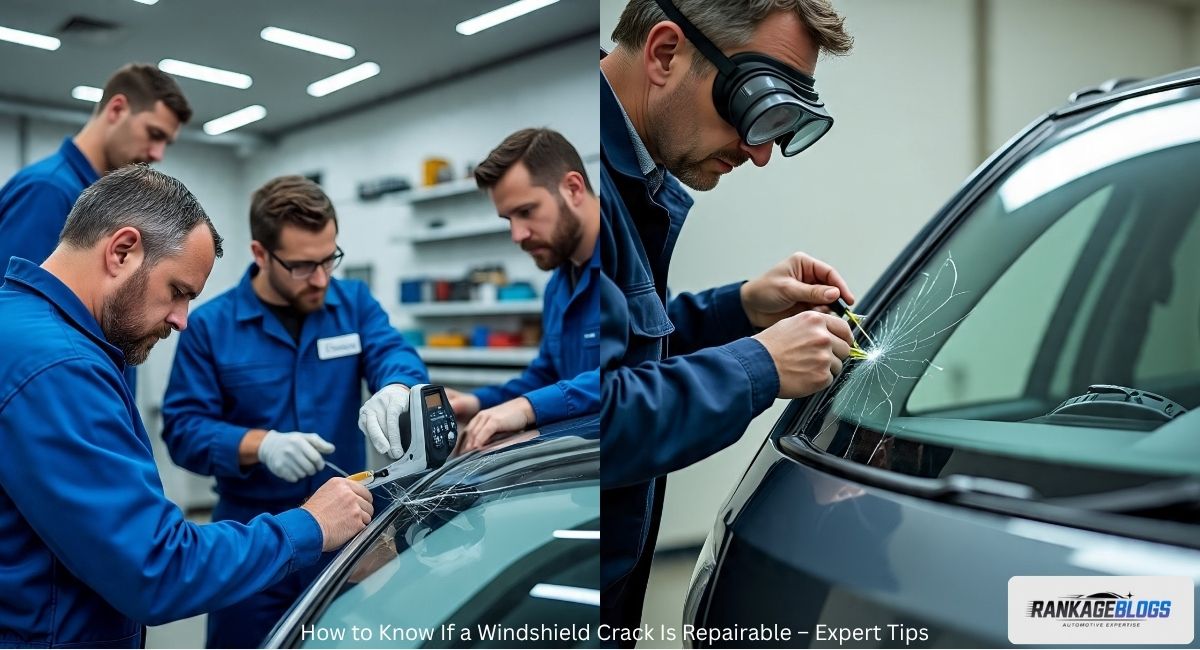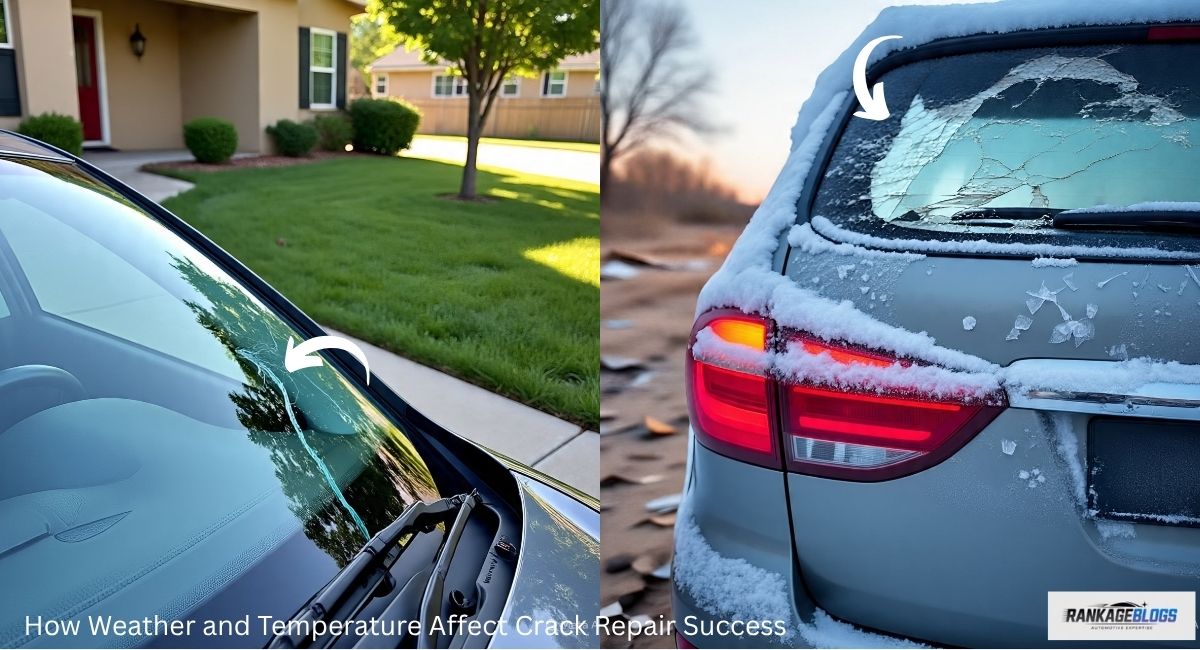A cracked windshield isn’t just an inconvenience — it’s a silent safety threat that can escalate faster than most drivers realize. That thin line across your glass? It can compromise structural strength, reduce visibility, and lead to costly replacements if ignored — which is why knowing how to know if a windshield crack is repairable is so important.
In the USA and other developed countries, windshield damage assessment is a crucial step in deciding whether repair is possible or if a full replacement is the safer choice.
Understanding how to know if a windshield crack is repairable depends on three key factors:
- Size of the crack
- Location on the glass
- Type and severity of damage
This complete guide on how to know if a windshield crack is repairable will walk you through expert evaluation criteria, common myths, DIY pitfalls, and actionable prevention tips so you can make an informed, money-saving decision before a small issue turns into a big problem.
What Makes a Windshield Crack Repairable or Unrepairable

Understanding Repairable Limits
Repairability depends on length, depth, and placement — the three fundamentals of how to know if a windshield crack is repairable. Most professionals use guidelines from the National Windshield Repair Association (NWRA):
- Length: Usually repairable if under 6 inches (about the length of a U.S. dollar bill). This length is widely accepted as the practical upper limit for repair without compromising safety. Anything longer risks spreading or weakening the glass further.
- Depth: Should only penetrate the outer glass layer. Windshields are made of laminated glass—two layers with a plastic interlayer—so cracks that go deeper may affect the whole structure.
- Placement: Must be away from the driver’s direct line of sight and the windshield edge. Cracks near edges can quickly spread due to structural stress, while those in the vision zone pose legal and safety concerns.
When Repairs Aren’t Safe
If the damage penetrates both layers of laminated safety glass or affects embedded technology like rain sensors or cameras, replacement becomes the safer option. Modern cars often include advanced driver-assistance systems (ADAS) that rely on sensors behind the windshield, which may be damaged or misaligned by cracks. Repairing such cracks risks impairing these systems and may violate Federal Motor Vehicle Safety Standards.
Measuring Crack Size: The Key Factor in Repair Decisions
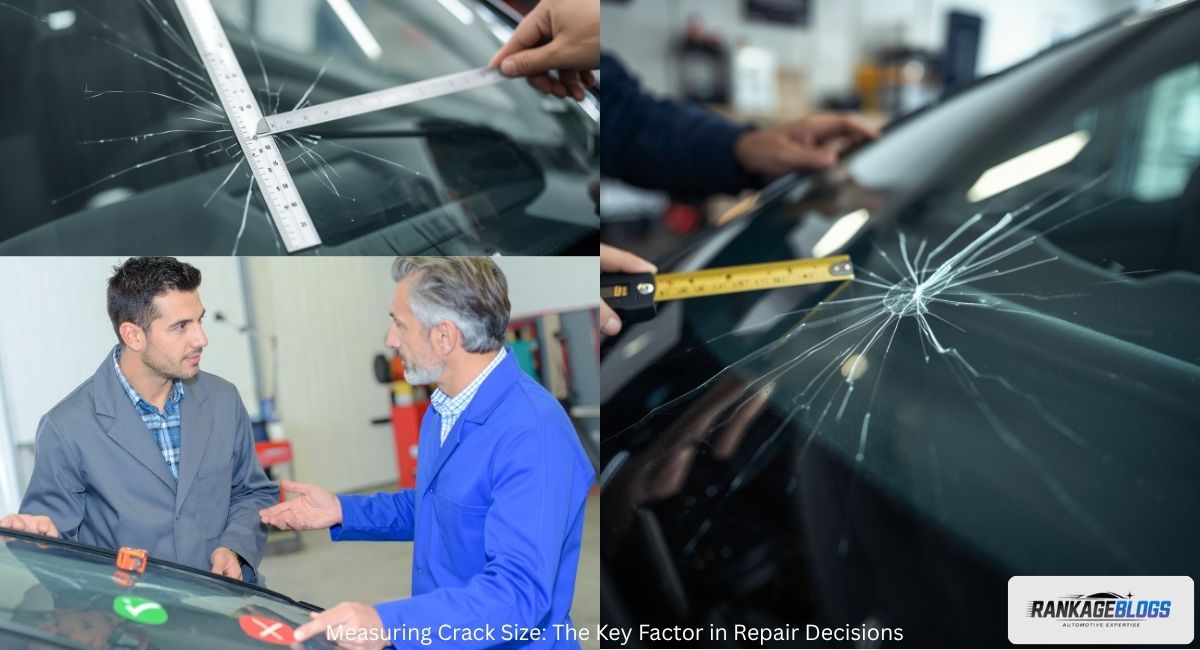
The Dollar Bill Test
For how to know if a windshield crack is repairable, use this quick visual test: if the crack can be completely covered by a dollar bill, repair is usually possible. This easy check is popular among repair professionals and vehicle owners alike, providing a practical rule of thumb for how to know if a windshield crack is repairable. For instance, if your crack measures less than 6 inches—roughly the length of a folded dollar bill—it generally qualifies for repair instead of replacement.
Why Depth Matters Too
The depth of windshield crack determines resin penetration. If damage extends through both layers, no repair can restore full safety — one of the key indicators in how to know if a windshield crack is repairable. Surface cracks that remain in the outer layer allow resin to fill and bond effectively, but deeper damage requires replacement to ensure structural integrity.
| Crack Size | Repairable? | Notes |
| Under 6 inches | Usually Yes | If away from edges and shallow |
| 6–12 inches | Sometimes | Depends on location and type |
| Over 12 inches | No | Full replacement required |
This size guide aligns with industry standards and helps technicians decide the best course of action quickly.
Why the Location of a Crack Matters More Than You Think
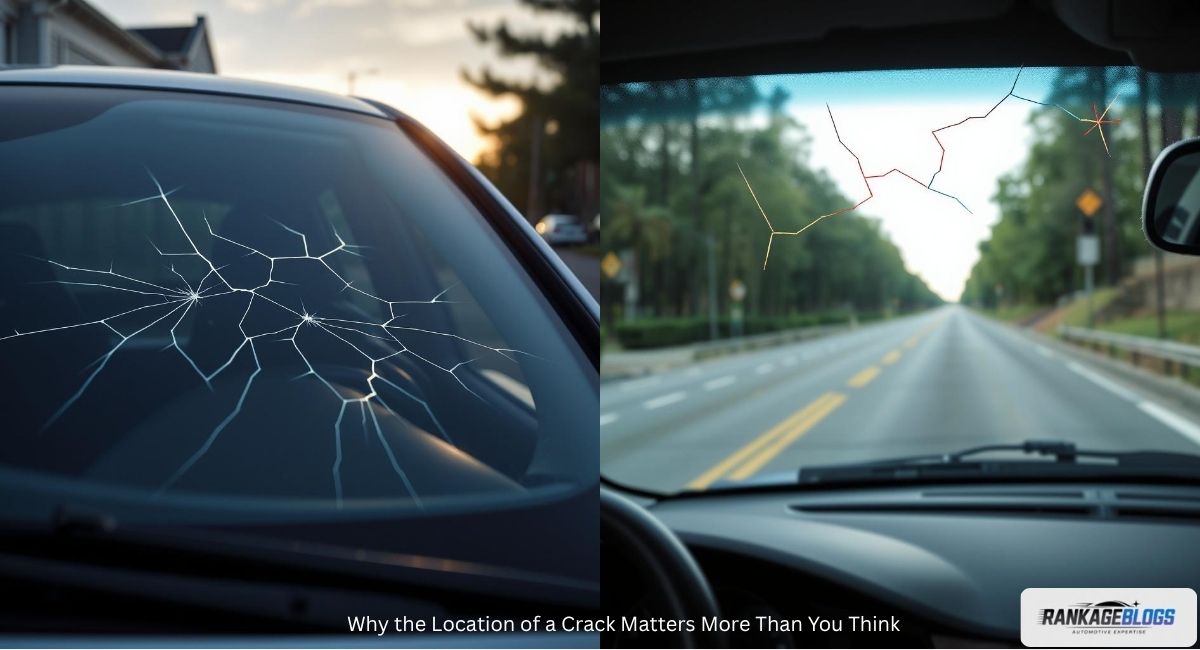
Edge Damage Risks
Windshield edge cracks weaken structural integrity. Even tiny cracks here often spread rapidly due to frame pressure, which is why location is critical in how to know if a windshield crack is repairable. The edges bear the brunt of stress from the car’s frame and environmental conditions, making them highly vulnerable. A crack near the edge threatens the whole windshield’s stability, increasing the chance of total failure during an accident.
Driver’s Vision Zone
If a crack falls in the critical vision area, even a perfect repair might leave distortions — a legal and safety hazard. Laws in many states restrict driving with impaired vision caused by windshield damage. This is especially true if the crack interferes with the driver’s ability to see traffic signals, pedestrians, or road hazards clearly.
Different Types of Windshield Cracks and How Each Affects Repair Feasibility
Star Crack Windshield
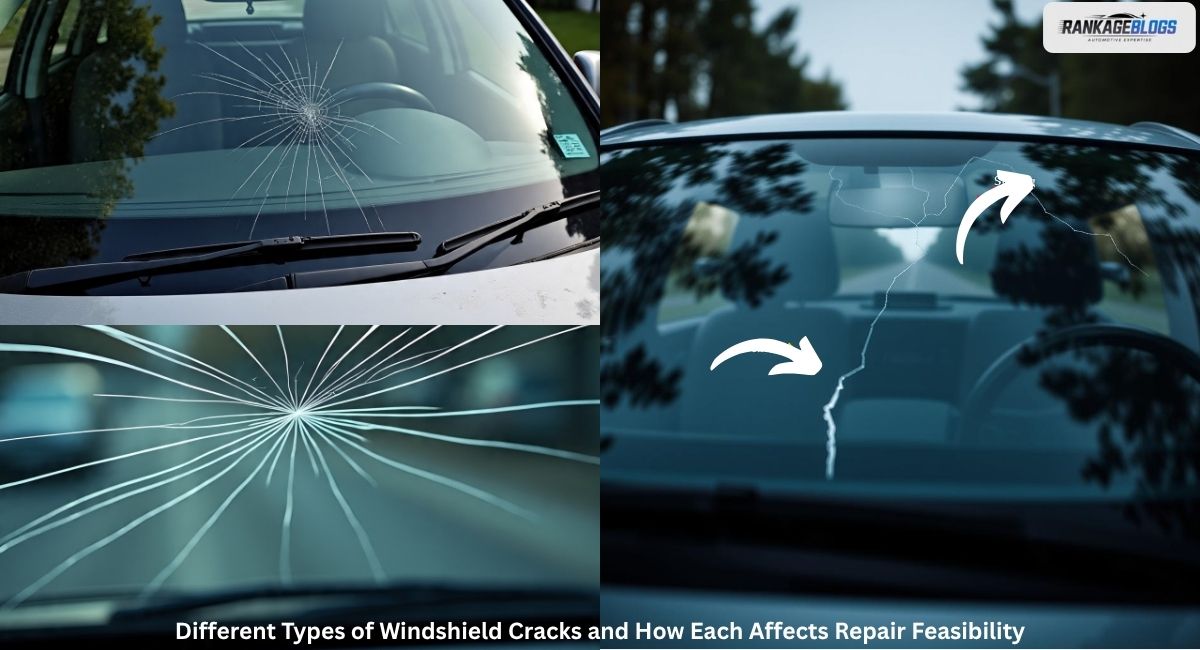
Multiple radiating lines from a single impact point characterize star cracks. They are repairable when small but hard to make invisible, and size plays a huge role in how to know if a windshield crack is repairable. Due to their branching nature, star cracks may require expert attention to ensure the resin fills all fissures adequately.
Bullseye Crack Windshield
Circular damage resembling a target is easier to repair with minimal visibility issues. Bullseye cracks have a clean, round pattern, which allows for effective resin injection and better cosmetic results.
Combination Crack
Contains multiple crack types. Repair depends on severity and spread. Combination cracks are more complex and may require detailed inspection to determine repair viability.
Cracks That Are Almost Never Repairable
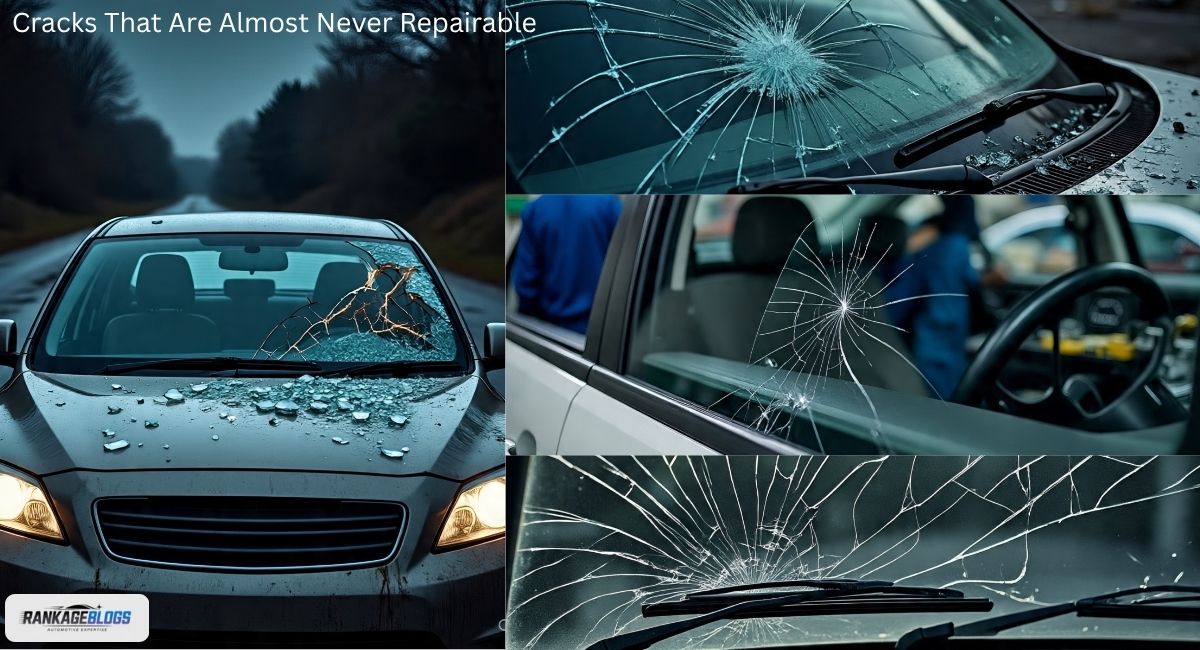
- Long cracks over 12 inches
- Multiple intersecting cracks
- Damage reaching windshield edges
- Deep penetration to inner layer
In these cases, windshield replacement ensures both safety and legal compliance. Such extensive damage compromises the laminated glass’s ability to maintain its strength and protects occupants during collisions.
This is especially critical for vehicles that endure significant stress. Owners of commercial trucks and off-road vehicles should understand that spider-web cracks on heavy-duty windshields not only require replacement but also pose severe safety and compliance risks.
How Weather and Temperature Affect Crack Repair Success 
Heat and Expansion
Hot weather causes glass to expand, worsening cracks. Immediate shade or a sunshade can help until repair. Glass expands and contracts with temperature changes, which affects crack growth. Preventing extreme heat exposure helps keep cracks stable.
Cold and Contraction
Cold weather makes glass contract, sometimes causing windshield spider cracks to multiply overnight. Moisture can also freeze inside cracks, expanding them further. Parking indoors or using covers during cold months can reduce damage progression.
Repair or Replacement? Choosing Based on Crack Shape, Size, and Position
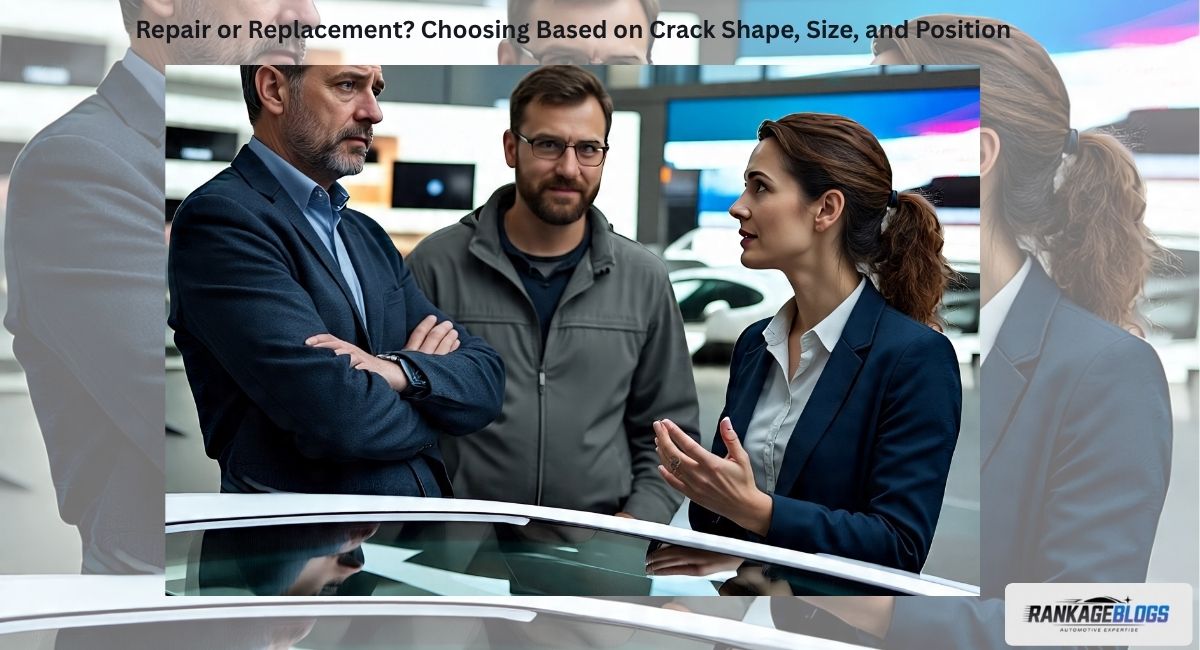
Repair is Better When:
- Crack is small and shallow
- Not in driver’s primary vision
- Not touching edges
Replacement is Necessary When:
- Crack fails any size or depth test
- Located in vision zone
- Compromises safety systems
Deciding between repair and replacement hinges on these key factors: safety, cost, and legal compliance.
Cost-Benefit Considerations
Sometimes repair is possible but not cost-effective if multiple cracks require treatment. In evaluating how to know if a windshield crack is repairable, technicians also weigh long-term value and safety before suggesting replacement.
Safety Certification After Repair
Certified repair services often provide documentation proving the windshield meets safety standards post-repair, which can be useful for insurance claims or resale.
When Is the Best Time to Get a Windshield Crack Repaired
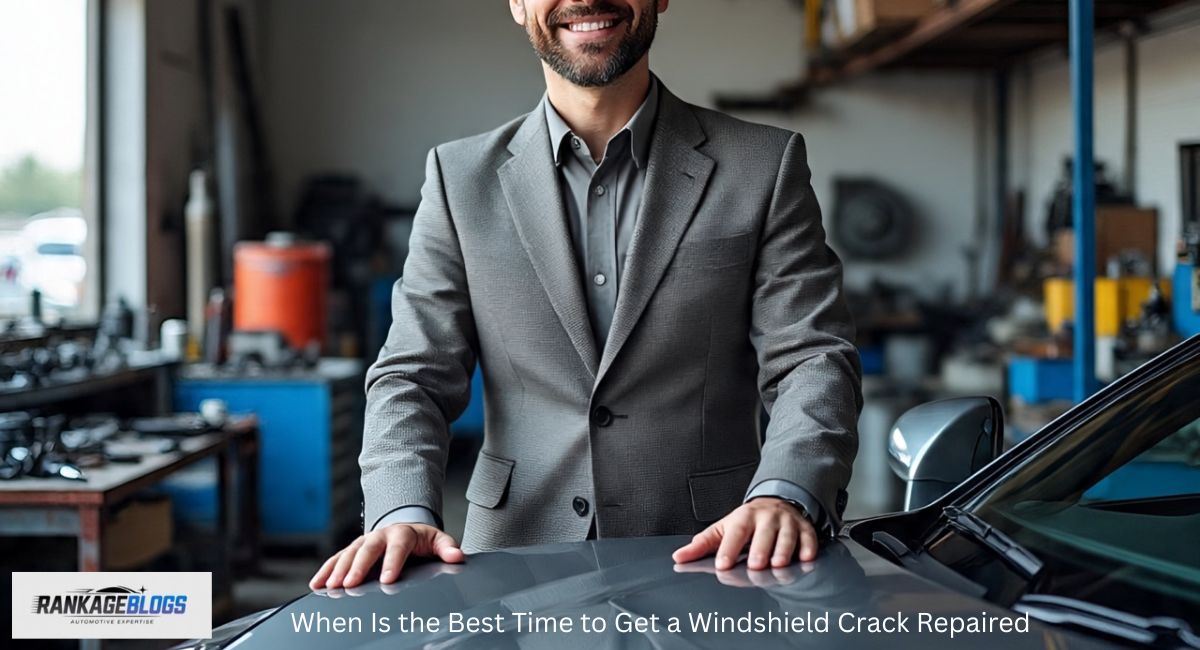
The golden rule: The sooner, the better. Even waiting a week can turn a repairable crack into a replacement case. Environmental stress, temperature fluctuations, and road vibrations worsen cracks over time.
Pro tip: Schedule repairs in spring or fall when curing conditions are ideal. Moderate temperatures and stable humidity create optimal conditions for resin curing and long-lasting repairs.
Seasonal Timing Advantages
Spring and fall often offer the most stable conditions for resin curing, leading to stronger and clearer repairs compared to extreme summer or winter temperatures.
Impact of Delay on Repair Costs
Even a few days of delay can lead to damage spread, increasing costs significantly, and can change the outcome of how to know if a windshield crack is repairable. Early intervention is almost always cheaper.
Common Myths About Windshield Crack Repairs
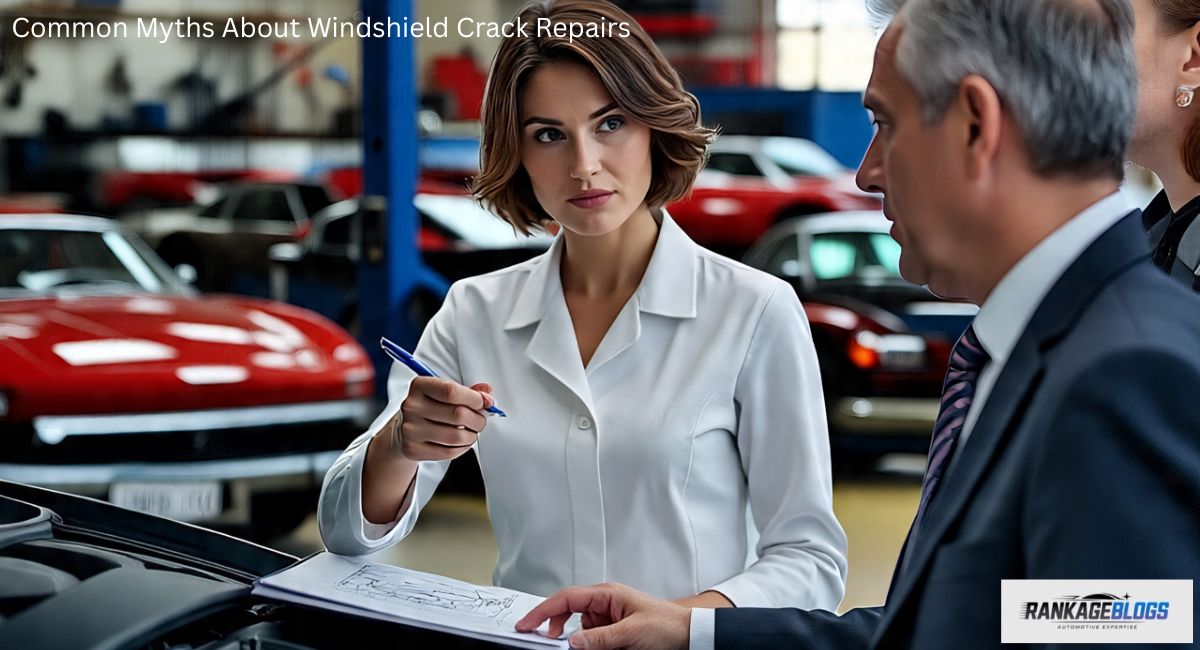
- “Small cracks can wait.” – Road vibration can double the size within days. Ignoring small cracks risks costly replacements.
- “DIY kits are just as good.” – Professionals use industrial-grade resins and curing systems, ensuring safety and durability.
- “Repairs are always visible.” – Quality repairs are often barely noticeable, restoring both strength and appearance.
Repairs Weaken the Glass
A well-done repair restores much of the glass’s original strength, preventing further damage. It doesn’t make the windshield weaker than before.
Crack Repairs Always Leave a Mark
While some repairs leave faint lines, modern resins can make damage nearly invisible to the untrained eye.
DIY Crack Fixes: Why Most Fail and What Experts Do Differently
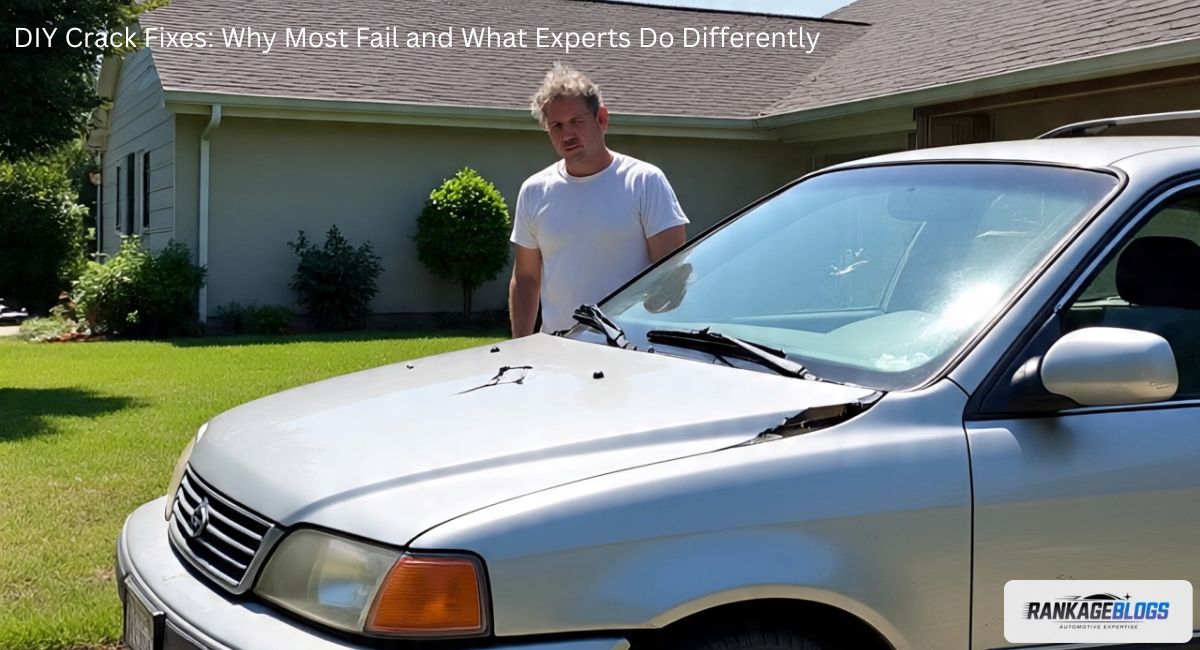
Why DIY Fails:
- Resin doesn’t penetrate deep enough
- Poor curing under inconsistent UV light
- No vacuum seal to remove trapped air
Lack of Proper Equipment at Home
DIY kits can’t match the precision of professional vacuum and injection systems, leading to incomplete resin fill.
Incorrect Curing Methods
Uneven or insufficient UV exposure during curing can result in weak bonding, causing cracks to reopen.
What Experts Do:
- Use calibrated pressure injectors to push resin deep into cracks
- Employ vacuum sealing techniques to eliminate bubbles
- Apply high-grade UV curing to ensure proper hardening
These professional steps guarantee a stronger, clearer repair that lasts.
Preventing Small Cracks from Spreading
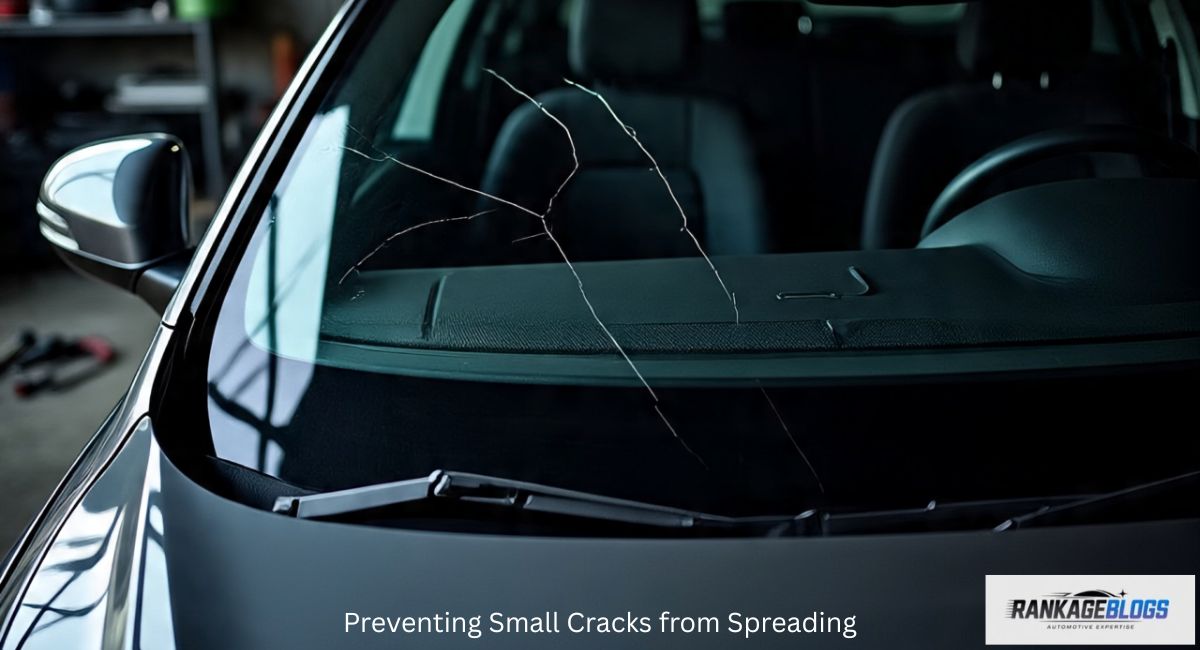
- Avoid sudden temperature changes (like blasting A/C on hot glass) to reduce stress — an often-overlooked tip in how to know if a windshield crack is repairable.
- Drive cautiously on rough roads to minimize vibration impact
- Park in shaded areas or use covers to protect glass from environmental damage
Avoiding Physical Pressure on Glass
Slamming doors or leaning on the windshield area can worsen cracks by adding vibration and stress to the glass.
Keeping the Crack Clean
Dust and debris inside a crack make resin bonding less effective. Covering the crack with clear tape temporarily can help.
These simple habits can prolong windshield life and avoid costly repairs.
How to Save Money by Repairing Early
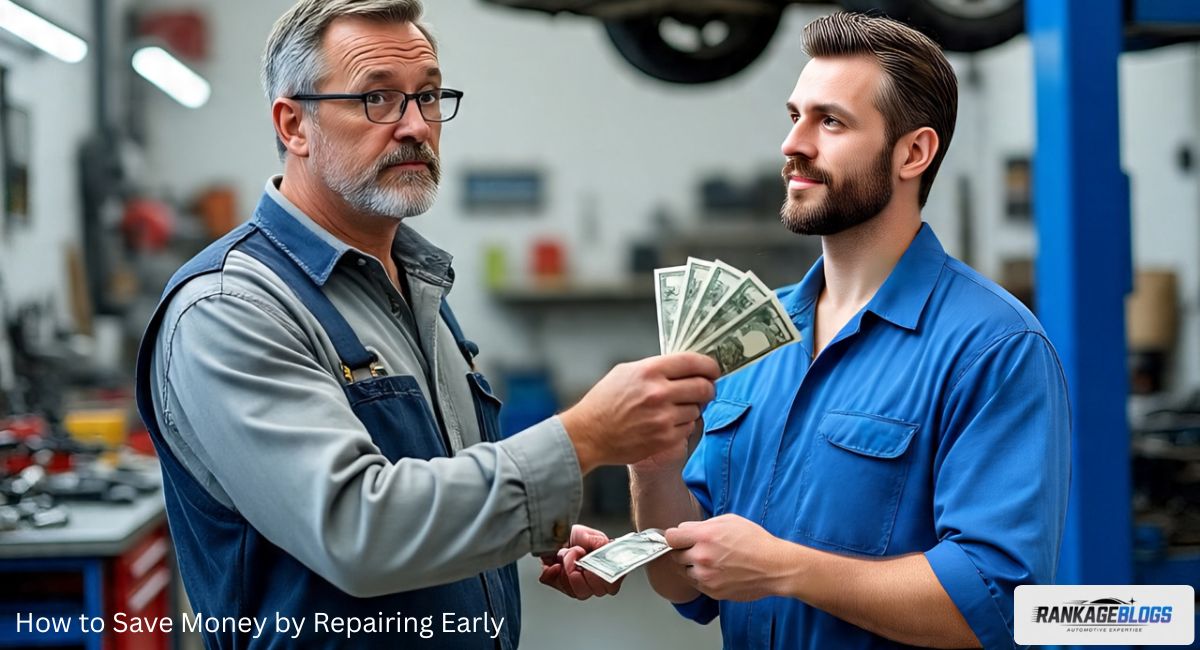
Cost comparison:
- Repair: $50–$150
- Replacement: $200–$1,000+
Insurance Incentives
Many insurers prefer early repairs and may waive deductibles, making it essentially free for drivers to fix minor cracks.
Insurance note: Many policies waive deductibles for early repairs, making them effectively free. Repairing early saves money and avoids safety risks associated with larger cracks.
Resale Value Preservation
A repaired windshield keeps your car’s resale value higher, as visible damage often reduces buyer confidence
Conclusion
Now you’ve mastered how to Know if a windshield crack is repairable: it depends on its size, depth, and location. Small, shallow cracks away from the edges are often fixable in minutes, saving you money and maintaining safety — the core principle of how to know if a windshield crack is repairable. Wait too long, and a simple repair can turn into a costly full replacement.
Final Thoughts
A cracked windshield might seem minor, but it’s a ticking clock for both safety and cost. Now that you understand how to know if a windshield crack is repairable. Remember: the sooner you act, the higher your chances of a quick, low-cost repair — and the lower your risk of a full replacement. Don’t wait for the crack to spread; get it checked by a certified professional today and keep your view clear and your ride safe.
FAQs
- At what point can a windshield not be repaired?
When it’s over 12 inches long, reaches the edge, or penetrates both glass layers.. - What windshield cracks cannot be repaired?
Cracks at the edges, in the driver’s direct view, or with severe internal damage. - How do I know if my windshield is repairable?
“How to know if a windshield crack repairable” check If it’s under 6 inches, shallow, and away from edges — but get a professional opinion. - Does windshield crack repair work?
Yes — when done professionally, it restores strength and appearance. - Can a cracked windshield be fixed without replacing it?
Yes — small cracks and chips can often be repaired. - How bad of a crack can be repaired?
Up to 6 inches if it’s not deep or near the edges or in the driver’s view. - Are chip repairs worth it?
Yes — they stop damage from spreading and save money. - Will super glue stop a crack from spreading?
Temporarily — but it’s not a safe or lasting fix. - Does insurance cover cracked windshields?
Many comprehensive policies do, often with no deductible. - Is it worth filing a claim for a cracked windshield?
Yes, if repair is free or replacement cost exceeds your deductible. - Who is responsible if a rock hits my windshield?
Usually treated as an accident — covered by comprehensive insurance.

